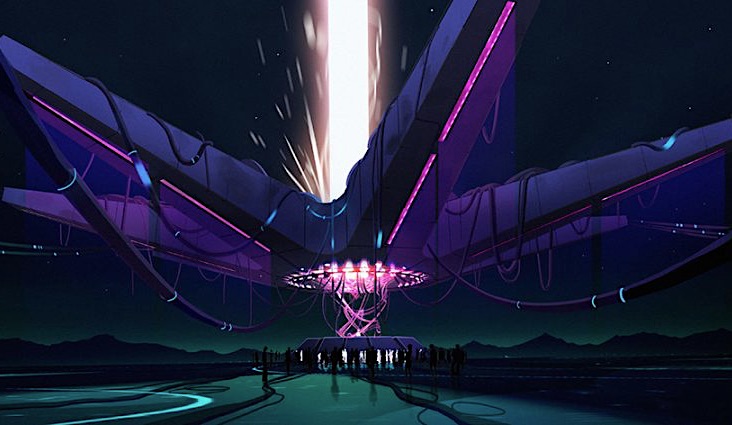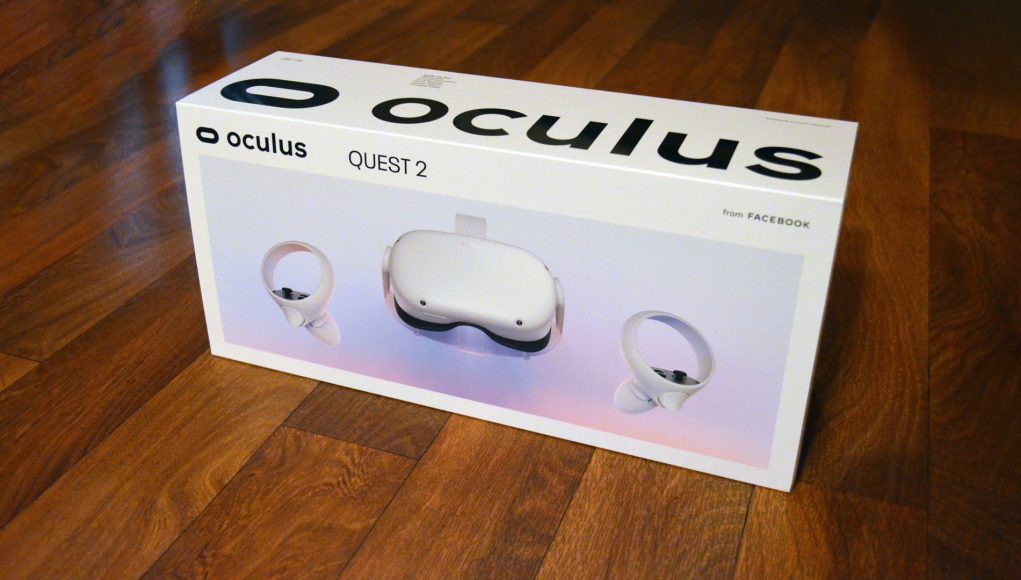
When the Quest was first launched in 2019, he rightly received the title of “the first great standalone VR headset” because that’s really kind of a balance between hardware, software and content. Next, we saw Quest with time is improved by software updates which have added new features and improved existing ones. Now we have a Quest 2, it’s almost the same headset, only better in all respects.
Facebook has announced a headset and opened pre-orders for the price of $ 300 for the 64GB version and $ 400 for 256 GB. Oculus Quest 2 will be released October 13, 2020.
But before the owners of the original Quest with disdain look at his old headset, think about it. Quest 2 might be better (almost) in all respects, but really nothing new in it. Quest 2 contains almost no new features compared to the original, and Oculus said that both headsets will use the same library of games.
Then there is the quandary … wouldn’t it be better to call Quest 2 Quest’s? As will become clear from further review, a significant part of the potential Quest 2 has not yet disclosed. As with the original, Quest 2 will eventually improve. In this sense, it is fair to call it a Quest’s release date, but as soon as Oculus will provide the promised improvements in the future, he will be called Quest 2.
Oculus Quest 2 vs. Quest
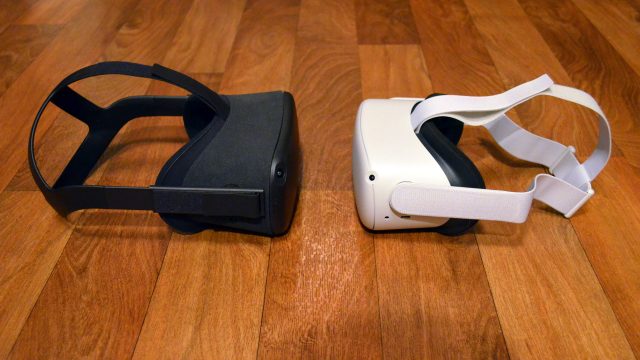
Before diving into a full review, here are the differences Quest 2 compared with the official performance Quest:
| Quest 2 | Quest | |
| Resolution (by eye) | 1832 × 1920 (LCD) |
1440 × 1600 (OLED) |
| Update frequency | 90 Hz | 72 Hz |
| Processor | Snapdragon XR2 |
Snapdragon 835 |
| RAM | 6 GB | 4GB |
| Battery life | 2-3 hours | 2-3 hours |
| The work of the controllers | 4 times longer than Quest | |
| The field of view | Equally | Equally |
| IPD | 58mm, 63mm, 68mm | 58 to 72 mm |
| Weight | 503 g | 571 g |
| Memory | 64 GB or 256 GB | 64 GB or 128 GB |
| Strap | Soft (hard sold separately) | Hard |
Equipment
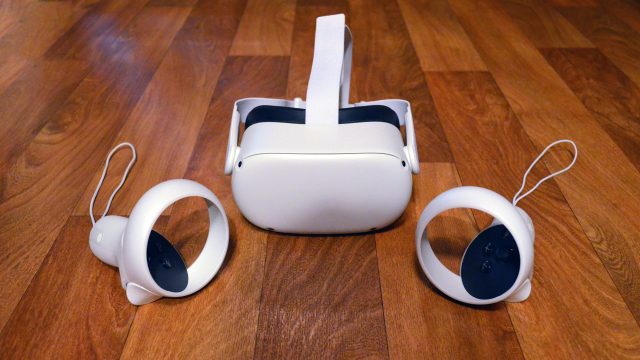
One of the most exciting, but as yet unused hardware in Quest 2 is the CPU. While the original Quest was launched with an outdated (even then) Snapdragon 835, Oculus actually chose the processor of the highest class for Quest 2, Snapdragon XR2. It is not only much stronger, but designed for VR, which includes some additional features that make it even better for use in a VR headset.
But it will take some time to until we see that XR2 is really “lights” in the Quest 2. Oculus reports that the Quest 2 will work with the “experimental” option 90 Hz, which will launch the main menu with the refresh rate. However, the games will continue to operate at a frequency of 72 Hz.
“Shortly” after launch, according to Oculus, the company set the mode of 90 Hz by default for the main menu, and will allow developers to use the extra refresh rate, but it may require updates for each application.
Same thing with the Oculus Link. On the first day, if you connect your Quest 2 to your computer to use the Link, the VR content on your PC will work with a frequency of 72 Hz and will have the same encoding quality as the original Quest. “Shortly” after launch, says Oculus, Quest 2 can use Link at 90 Hz and higher quality.
So it will be some time before we see the full power of Quest 2.
The good news is that the majority of games may automatically use the advantages of higher resolution Quest 2, so it’s one of the advantages, which manifests itself immediately, and it’s really big.
Display and lenses
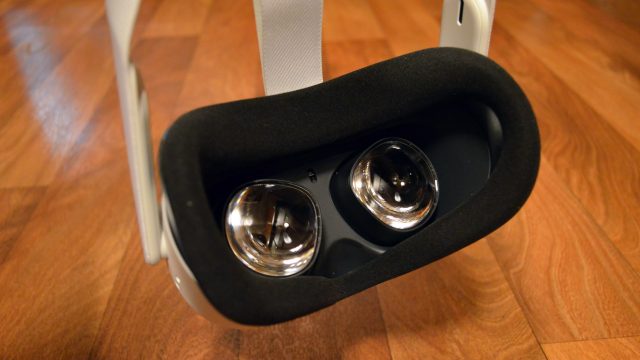
The jump in resolution and frame rate — one of the most significant improvements Quest 2. Quest 2 has a resolution to each eye 1832 × 1920 (3.5 megapixels) compared to the original 1440 × 1600 (2.3 megapixel). This is a good leap, but also there is one small additional improvement, because the LCD display Quest 2 has more subpixels — which fill “the effect of mosquito nets” even more than the OLED display, Quest. In Quest 2 “Screen-door effect” is almost invisible.
The pixels are too small to be seen individually; you can still see evidence of the basic structure of the pixels on the background flat colors, but they fade into the background of all textured.
The resolution difference is immediately noticeable. Thanks to the extra sharpness and smoother motion with a frequency of 90 Hz menu in Quest 2 seems a little more real than the original Quest.
As you know, the transition from OLED to LCD has disadvantages. In particular, the LCD display can’t come close to a deep black color, as OLED. Although he does not have the deep blacks as the original, it also has greatly reduced the blur that is probably a worthwhile compromise, because higher resolution doesn’t matter much if you can’t prevent frequent lubrication of pixels.
Lenses Quest 2 are almost the same as the original. They are, as before, have the same problem with the “divine rays” that any modern Fresnel lenses (ie: annoying rays in the high-contrast elements, but generally not annoying in most scenes). Oculus declined to share a field of view of the official Quest 2, but said that it is equivalent to the original Quest (that is, enough to be exciting but still would like more). The “Golden mean” or the sharpness of the lens is about the same as in the original Quest.
Lenses and display Quest 2 are set up well. Chromatic aberration (color distortion) and the blur is almost imperceptible.
IPD
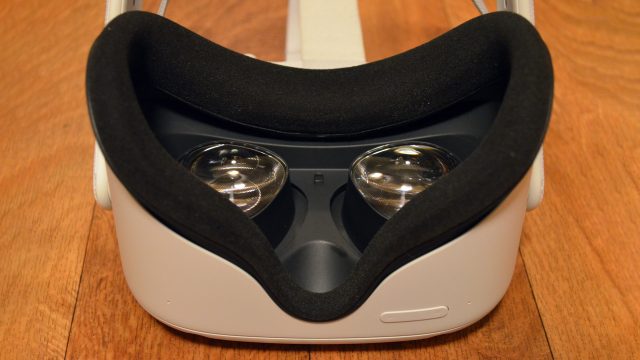
IPD Quest 2 can be physically adjusted in three positions: 58 mm, 63 mm and 68 mm. Instead of the slider in the lower part of the headset that allows you to adjust IPD by looking through the lens, to change the IPD in Quest 2 you need to remove the headset, take both lenses and move them to one of the other provisions.
Due to the marked adjustment of the IPD, even if you are within the minimum and maximum range, you can deviate by 2.5 mm from the “ideal” lens alignment (if you hit right between the available provisions). It can be concluded that if Oculus felt that the deviation to 2.5 mm from the alignment was normal in the mid range, it would also be normal at the ends of the range — giving Quest 2 “maximum recommended” IPD range from 55.5 mm to 70.5 mm, which is quite close to the “recommended maximum” of the range of the original Quest from 56 to 74 mm.
Sound
Quest 2, like its predecessor, has a built-in hidden speakers that allow the sound to come out of the headband. Despite the fact that the speaker holes are located a little closer, they are still far from the center of the ear, which makes them not particularly good for precise spatial sound.
The quality of sound and volume dynamics Quest 2 Quest seem to be quite relevant. This means that the sound is quite acceptable, but it is far from the quality that could be heard from the Index or even the original Rift CV1.
Many games are perfect built-in sound Quest 2, but games with particularly good sound technology and design have a chance to miss a lot of additional dive without a better sound solution.
Design and ergonomics
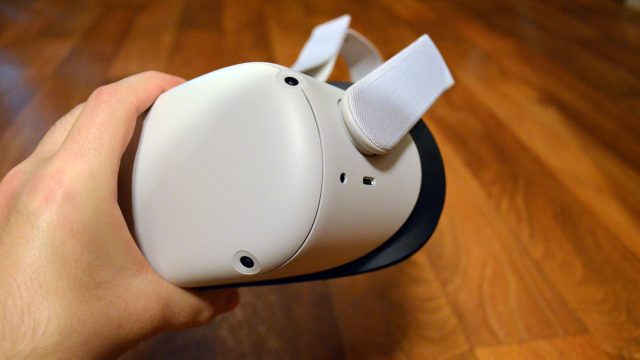
Design Quest 2 is not fundamentally different from its predecessor, but has several improvements. Size and weight it is a little smaller and a little easier.
Quest 2 manages to look a little less convex, though slightly less premium because of the fully plastic finish compared to the fabric finish of the original.
Minimum buttons and ports are almost identical: adjust the volume at the bottom, the USB-C port for charging and data transfer on the left next to the audio input 3.5 mm and power button and power indicator led on the right.
Strap
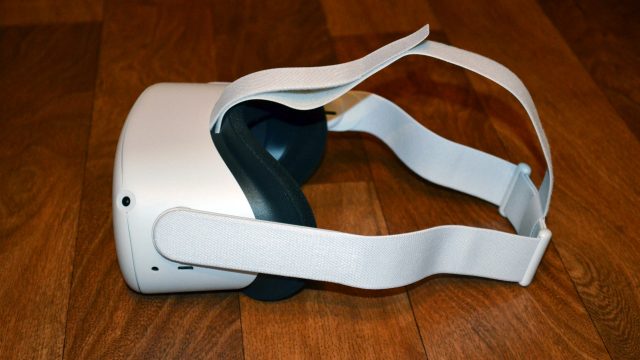
The biggest change in the design strap on the head. In the kit you will receive a soft strap, which is slightly inferior to the hard strap of the original Quest. The advantage of the rigid straps is that they capture the head and transfer the weight from the front of the head by supporting the top and side straps. Soft straps without any structure can’t handle it nearly as well because they can really only support the front part of the headset using the top of the belt and can’t hold the back of the head. It is possible to detect that the forehead pressure more than I would like.
Oculus finally offers ergonomic accessories from a third party, including straps Elite Strap ($50) and Elite Battery Strap ($80) , both of which are tough and specifically designed to accommodate the counterweight.
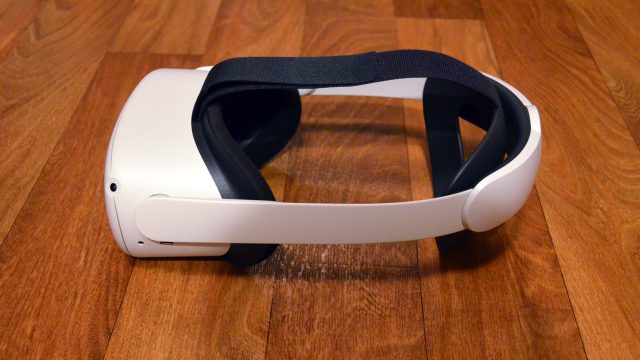
The good news is that the design of the Elite Strap is excellent-this is probably the best head strap for Oculus today — that makes you wish that the developers just included it in the kit by default. Seems pretty obvious that the failure was largely a question of economy.
Fit Pack
In addition to the options Elite Strap, Oculus will also sell Fit Pack ($40), which will include blockers of light, suitable for lenses (to hide any light coming from the nose) and two different spacers for a wider or narrow type of face. The included face plate many may not be suitable, that will cause leakage of light. Remarkably, these accessories will be available, so a wider range of people can find the ergonomic solution that suits them.
Quest 2 also comes with the gasket for glasses that holds the lens a little further from your eyes, leaving place for points. The front panel is slightly smaller in width of the original Quest, so especially wide the rims can be problematic when using a headset.
Controllers
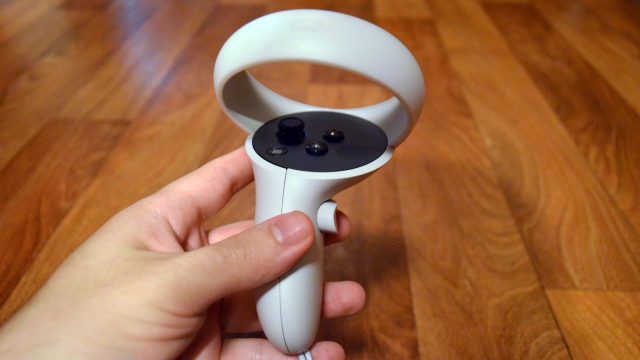
At first glance, controllers Quest 2 may not be very different from the original controllers Quest, but in fact they have undergone significant ergonomic changes or perhaps a ergonomic return. The “new” design of controller is very close to touch controllers original headset Rift CV1. And it’s great because they probably had the best ergonomics among all controllers of virtual reality to date.
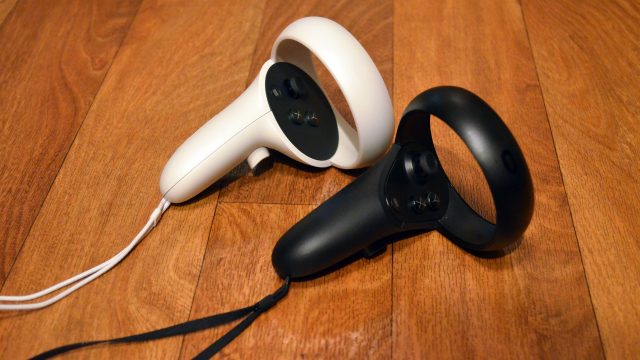
In comparison with controllers, Quest, Quest 2 controllers more and have a much larger offset edge, which provides a natural area to rest your thumb, not putting it on the button. The shape of the handle seem to also fit the hand a bit more deliberately. Controllers Quest 2 is actually a bit more than the original controllers for the Rift CV1. For some, this fact will be a clear improvement, and someone will seem a step backwards.
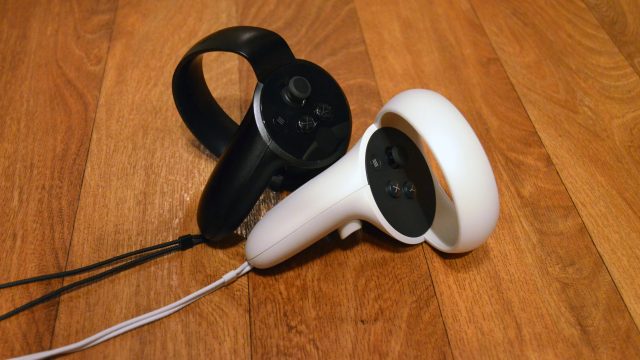
Tactile sensation from Quest 2 are significantly more powerful than its predecessors. It is not known whether they are able to some advanced haptic effects observed on controllers Rift CV1, but there is every reason to expect to find out more about this in the near future.
According to Oculus, the controller Quest 2 is now more energy efficient and last four times longer than the original controllers Quest. Unfortunately, Oculus confirmed that the controllers Quest 2 is incompatible with Quest or Rift S.
Adjusting IPD
Quest 2 has a setting IPD, even if it can only move between three discrete settings (58 mm, 63 mm and 68 mm). However, this approach is a little confusing. Instead of the slider in the lower part of the headset that allows you to see the picture when adjusting the IPD, in Quest 2 you need to remove the headset, take lenses, move them to one of several positions, and then again to wear the headset.
Various settings are simply labeled as 1, 2 and 3 and, apparently, there is no indication to the user about what position they should choose. The need to remove the headset to change the position of the lens, and then wear it again means that the user cannot watch the image at the time of his settings, and this greatly complicates the setup visually. And even if you are an enthusiast of virtual reality and truly know my own pupil distance, you have to remember which numbered setting corresponds to which dimension.
Tracking
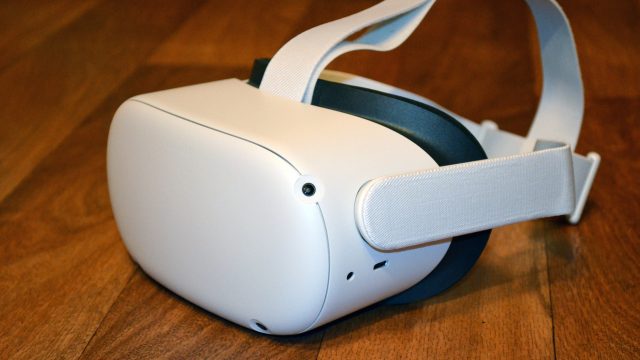
Like its predecessor, Quest 2 uses four cameras to monitor the inside-out, track, controller and hand tracking.
Oculus reports that the Quest 2 uses the same IR sensor (same resolution, same refresh rate, etc.), but they are “slightly” better in low light.
Thus, it is not surprising that the Quest 2 seems to track just as good as the original Quest (which has improved over time). This means that the headset virtual reality it provides better tracking as the performance and coverage of a tracking controller.
In General, it is not the most accurate tracking system and she still has some blind spots, based on the fact that you can see the camera, but its more than enough for the vast majority of games.
Although the track inside out can often have a different quality depending on the environmental conditions (light, moving objects, etc.), tracking Quest 2 is surprisingly reliable even in particularly challenging scenarios, such as ceiling fans, holiday lights and hinged shutters.
Hand tracking controller is also available in Quest 2, but it is not as accurate as the tracking controller. It seems that it works as well as the hand tracking in the original Quest, though Oculus said that they expect that over time can be made some further improvements thanks to the increased power Quest 2.
Experience
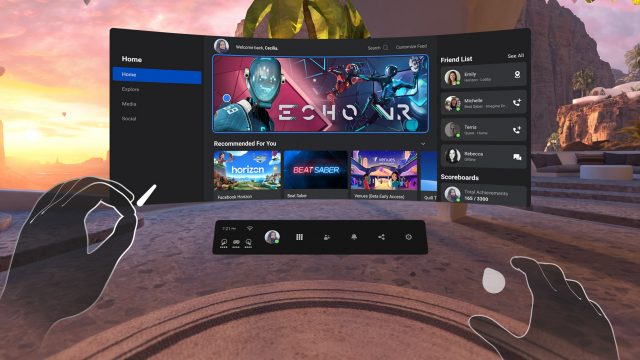
Experience Quest 2 is the pinnacle of what Oculus honed over years on the original Quest. By configuring end-to-end bounds and the almost immediate exit from sleep mode is undoubtedly the simplest way to go into virtual reality at the scale of the room.
During the existence of the Quest Oculus company significantly updated and simplified work with the software. Now that Facebook is more deeply woven into the base operating system Quest, the user must log in to Quest 2 account Facebook.
The system interface has become much faster than it was initially. The system menu now appears inside the game, not takes you out of them. There are many new “home” environments to choose from, including the ability to set end-to-end performance as “background”. This last part is really good for two reasons: 1) you can always see your controllers to pick them up, not blindly seek, and 2) the transition to virtual reality and the exit from it is much less harsh because you still have an idea about the real world around you, even when you first put on the headset.
One of the biggest improvements that Quest 2 gets since the release of the hand tracking. Although there is still no games with mandatory tracking of hands, really nice to be able to manage the entire system menu Quest 2 without having to pick up the controller. Sometimes you just want to come in and quickly get something to check; the ability to do this without taking up the controller, makes the headset much more affordable.
As obvious (and convenient) option in Quest 2 now has voice commands which is really very convenient. If you double-click Oculus, you will be prompted to enter a command. The headset can understand many basic actions such as “search Beat Saber” or “the launch of Phantom: Covert Ops”. It will also tell you the time, how much battery charge remains, or perform a Google search through the browser Oculus.
Speaking of the browser, it is quite pleasant to use thanks to the improvements of functions and a display with a higher resolution that allows you to see more objects of a web site. The use of controllers (and especially hands) to navigate the browser is still a bit slow (and no the basic functions of copy + paste or the “Save link as”) but now you can at least use voice input on the keyboard to dictate a Google search faster than typing.
Game
Interestingly, the selection of content Quest 2 is very similar to what happened with Quest. The headset was initially manufactured without any “killer apps” that could run with it; most of the best content was the game ported from other platforms.
Quest 2 is in the same situation.
However, if Quest 2 — your first headset for virtual reality, you will have a lot of good games. Library Quest recently got over 200 titles, and the first day you will be able to play a bunch of favorite VR games, such as Beat Saber, Moss , I Expect You to Die! , Superhot and VR , Pistol Whip , Job Simulator , Vader Immortal , Onward and much more. But for those who are not new to virtual reality, all these names do not cause any interest.
However, Oculus confirmed that on the horizon there are exciting content, but most of it will be available only after starting the Quest 2.
Some of the games that many look forward to in Quest 2 is the upcoming game Assassin’s Creed and Splinter Cell VR, The Climb 2 , Jurassic World Aftermath, Myst, update Pistol Whip “2089” and Warhammer 40,000: Battle Sister. But, alas, launch day they will not.
Oculus Link
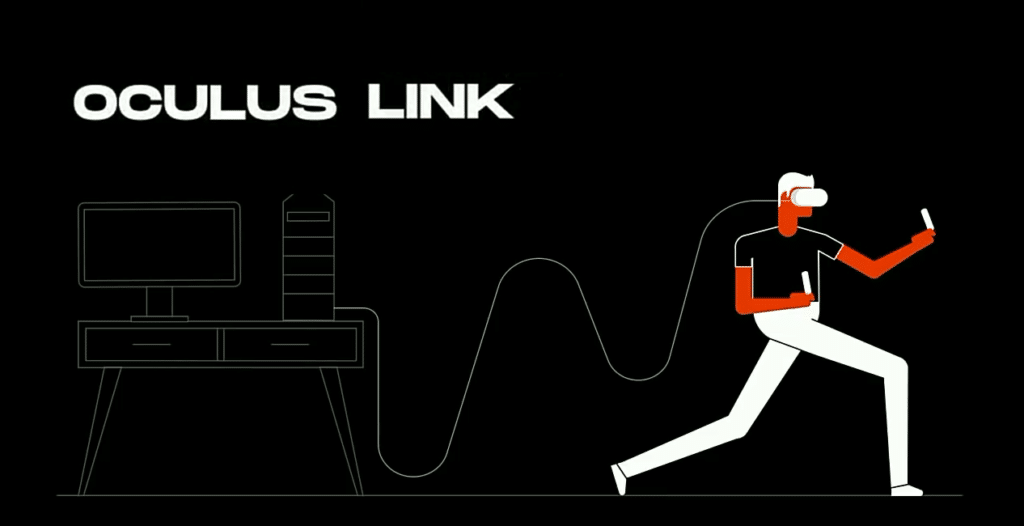
Using Oculus Link you can connect your Quest 2 to PC with support for virtual reality and use it as a Rift. This means that you can play games from the library, Oculus for PC or play from other VR libraries, such as SteamVR. This makes the Quest 2 is a very versatile headset, but there are a few “buts”.
The USB cable supplied with the Quest 2, is actually not enough to Link, so you’ll have to buy a separate one.
Oculus have not yet optimized Link for Quest 2, but again its imminent termination of production for all products of the Rift shows that they are no longer shown much interest in virtual reality for the PC.
Right now the Link experience is not much different from what you would get from the original Quest. Currently, Quest 2 with Link still works at the frequency of 72 Hz instead of 90 Hz, and the video coding was not optimized for resolution Quest 2. Oculus says that it plans to release these updates “soon” after the release of the headset.
Experience with Link is clearly good, but if Oculus is now offering its Quest for a standalone headset and a VR headset for the PC, he will have more than to work well with Link.
Summary
Although more time is needed to fully realize the true potential of using various software updates after launch, Quest 2 — best standalone headset that you can buy, and, surprisingly, the most affordable in its class for the price of $ 300. You will need to spend another 50 dollars on Elite Strap to get the best version of Quest 2, but otherwise it is a improvement over the original Quest in almost every respect: more power, higher resolution, better refresh rate, improved controllers. There’s nothing new, but it was unquestionably the best version of Quest.
Source
Other news with Facebook Connect:
Announcements of VR gaming on Facebook Connect
The first smart glasses Facebook will appear in 2021
Oculus Quest will get an update to Link and broadcast on a PC, as well as the Move function
Logitech G represents the line of audiogenic for Oculus Quest 2
“Infinite Office”: Quest 2 gets Logitech keyboard and customizable end-to-end transmission
A comparison of the displays of the Oculus Quest 2, Rift, and Quest’s






